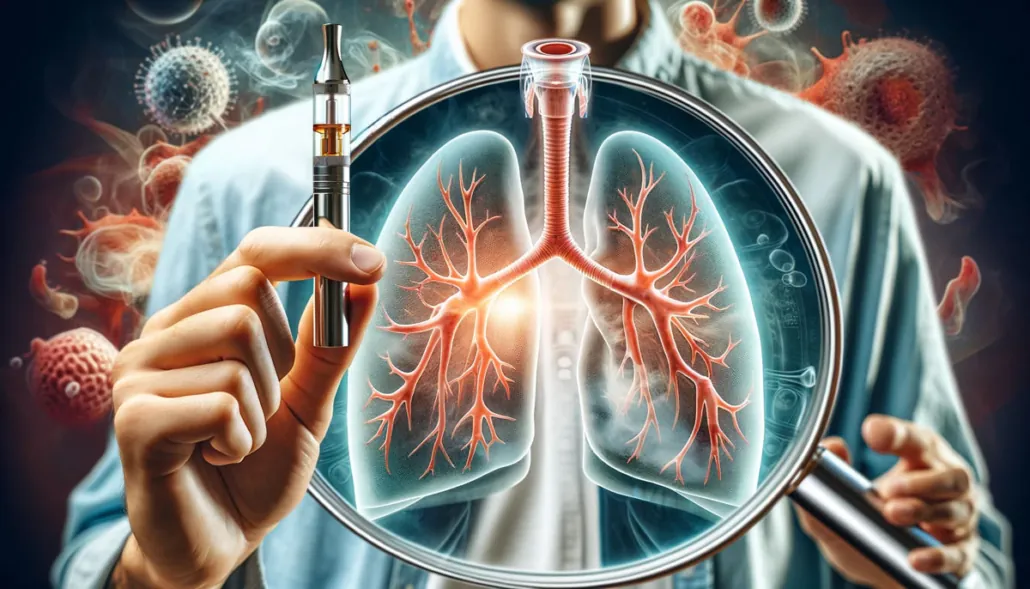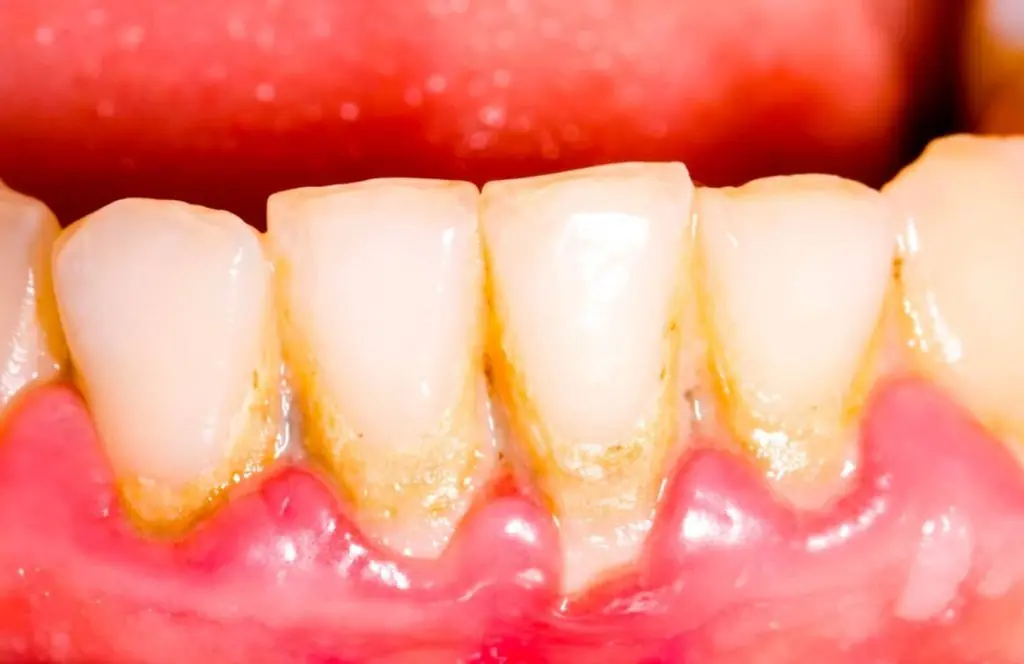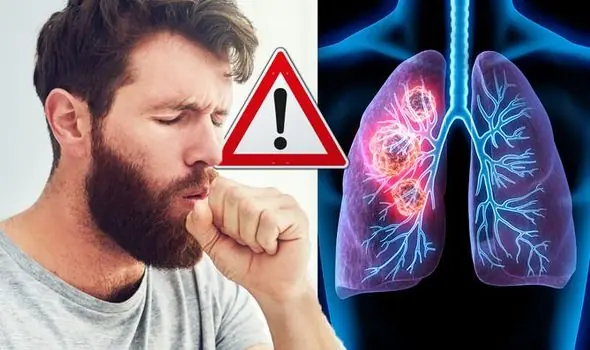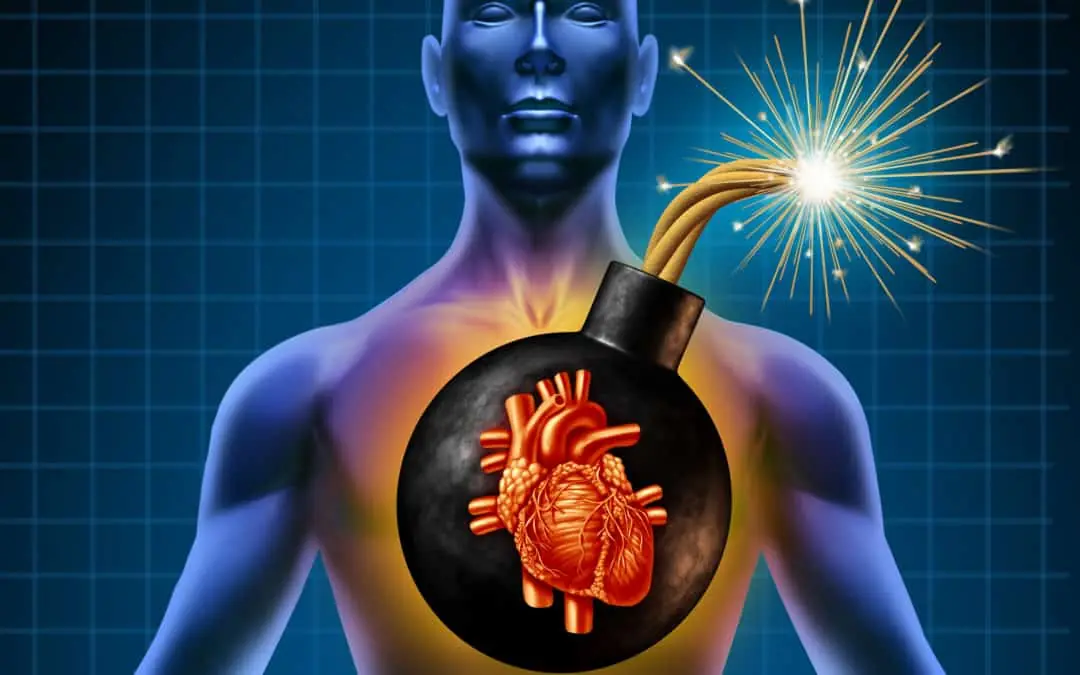
Vaping Dangers: Popcorn Lung, Cancer, Hypertension, Brain Damage and More
Vaping Dangers: Popcorn Lung, Cancer, Hypertension, Brain Damage and More
This article, updated in September 2019, is based on scientific evidence. It contains direct links to the scientific references.
Vaping is often touted as a safer alternative to smoking cigarettes with fewer health issues. However, despite the hype, vaping is bad for you as it can damage your lungs. A recent study found that people who use e-cigarettes have a 71% higher risk of stroke than non-users. The American Lung Association warns that popcorn lung (bronchiolitis obliterans) is a dangerous risk of flavored e-cigarettes, and the Surgeon General in the U.S. warns that breathing in vape smoke can increase your risk of developing this condition.
Many scientific studies have highlighted the potential negative effects of vaping cigarettes. Vaping can significantly increase your risk of respiratory disease and is even linked to lung cancer. There is also research suggesting that vaping can harm your cardiovascular health, increase blood pressure, and affect your brain function.
The American Cancer Society states, "The FDA does not currently require e-cigarette manufacturers to stop using potentially harmful substances and, it is difficult to know exactly what chemicals are in an e-cigarette because most products do not list all of the harmful or potentially harmful substances contained in them. Some products are also labeled incorrectly."
In this article, you will learn about the many dangers associated with vaping (e-cigarettes). You will also find out about the condition called "popcorn lung" and why this could be one of the effects of vaping on the lungs.

What is Vaping?
Vaping describes inhaling and exhaling vapor (aerosol) that is produced by an electronic cigarette or vaporizer. To create the vapor, vape liquid containing many chemicals with or without nicotine is heated and vaporized.
According to the American Cancer Society, e-cigarette vapor contains cancer-causing chemicals, although in lower amounts than in cigarette smoke. E-juice contains irritants that affect the lung such as formaldehyde, solvents, and other potentially harmful chemicals. Vaping allows these chemicals into the lungs and can cause inflammation.
Most scientists agree that it is still too early to know all the long-term health risks of vape liquid mist.
E-cigarettes are Linked to Higher Risk of Stroke and Heart Attack
In the largest cross-sectional study to date examining e-cigarettes and stroke, researchers found that compared with non-users, people who use e-cigarettes have a:
-
71% higher risk of stroke.
-
59% higher risk of heart attack or angina.
-
40% higher risk of heart disease.
The researchers looked at 66,795 people who were regularly using e-cigarettes, with a control group of 343,856 people who reported never having used e-cigarettes. Dr. Paul Ndunda, the lead researcher, said, "Even as we consider electronic cigarettes as a means of aiding in smoking cessation, we need to be careful about the impact this may have on the health of folks."
CDC Urges People to Stop Vaping After The Third Death From a Severe Lung Disease
The CDC and the U.S. Food and Drug Administration (FDA) are investigating an outbreak of severe pulmonary disease associated with e-cigarette product use. This investigation is ongoing and has not identified a single cause, but all reported cases have a history of using e-cigarette products. While this investigation is ongoing, the CDC advises people to avoid using e-cigarette products.
Vapers ‘At Risk of Irreversible Popcorn Lung’ if They Puff on Flavored E-Cigarettes
Flavored e-cigarettes contain chemicals that can cause inflammation in the tiny airways in your lungs. E-cigarette vapor can also cause a lung condition called “popcorn lung.”
Popcorn lung is a chronic lung disease also known as bronchiolitis obliterans (BO). This condition causes scarring of the tiny air sacs in your lungs, which causes your airways to thicken and narrow. In serious cases, popcorn lung can cause symptoms similar to chronic obstructive pulmonary disease (COPD), such as wheezing, coughing, and shortness of breath.
A 2017 study into the health risks associated with e-cigarettes found that some vape flavor packs contain a chemical called diacetyl. The American Lung Association states that when inhaled, diacetyl causes bronchiolitis obliterans (popcorn lung). The "popcorn lung" effect of vaping was so named because it was first associated with workers in popcorn factories where diacetyl was used to give popcorn a buttery taste. Doctors found that breathing in vapors containing diacetyl caused serious lung disorders in these workers. One study found that diacetyl was present in 39 out of 51 different flavors of vape juice, with amounts in some cases well above recommended limits.
According to a warning from the Surgeon General in the U.S., there are many negative effects of vaping. Flavorings such as diacetyl in many e-cigarette liquids can increase your risk of developing popcorn lung. Breathing in vape smoke can also increase your risk of inhaling other lung-damaging chemicals.
E-cigarette users show cancer-linked genetic changes
One of the dangers of getting addicted to vaping is that you expose your lungs to carcinogenic chemicals. According to research published in 2019, electronic cigarettes contain chemicals that can cause cancer. E-cigarette liquids are usually a combination of propylene glycol, glycerin, flavors, and nicotine. Chemical analyses of many e-liquids show that they contain toxic ingredients that are carcinogens, many of which are also present in cigarette smoke.
Researchers warn that, although levels of carcinogens in e-cigarette vapors are less than in cigarette smoke, they still pose a cancer risk. The research concluded that vaping causes damage to important genes that are connected with smoking-related cancer. There is also a potential cancer risk from inhaling “second-hand” vape smoke, but more research is needed. Studies have also shown that vapes can be especially bad for youths and adolescents, boosting carcinogenic enzymes and increasing the number of free radicals, which could have a damaging effect.
According to information from the National Cancer Institute, e-cigarettes contain potentially harmful chemicals. The mist vapor inhaled contains nicotine, flavorings, and other chemicals in varying amounts.

Other Harmful Effects of Vaping on Your Lungs
Vapers are still at risk of lung problems from inhaling aerosol. For example, studies show that frequent vaping could result in developing asthmatic-like symptoms due to respiratory irritation. Researchers from the Harvard School of Public Health reported that vaping can hurt your lungs more than just causing popcorn lung, as a combination of various chemicals and nicotine can result in serious, permanent lung damage. One 2018 study found that breathing in vape mist has a similar effect on lung function as smoking regular cigarettes, including decreased respiratory function and a negative impact on lung biology.
It is also important to remember that nicotine is an addictive substance and that vaping can be addictive. Other studies have shown that being addicted to vaping can result in chronic exposure to nicotine that can damage lung health. Over time, frequent vapers may develop symptoms of chronic obstructive pulmonary disease (COPD).
Is Vaping Without Nicotine Bad for Your Lungs?
There are still dangers to your lung health if you vape liquid that is nicotine-free. Research published in the journal Frontiers in Physiology reported that nicotine-free e-juices can still affect lung function. Although the vaping ingredient propylene glycol is generally regarded as non-toxic, flavorings in e-cigarette liquid can cause irritation and inflammation. Certain combinations of chemical flavorings can also result in tissue damage. Due to these dangers, a 2018 study recommended avoiding all forms of vaping until more research has been published.
Other Dangers of Vaping
Ingredients and chemicals in vape juice also pose other health risks apart from lung disease. A 2018 report on the effects of vaping reported that there is much debate on the benefits and health risks of vaping. For example, some researchers are concerned that you can still get addicted to vaping and that using vaporizers has “re-normalized” smoking. Vaporized e-cigarette juice also contains chemicals that scientists haven’t yet fully researched, and there is a danger that ingredients like formaldehyde and solvents can combine into cancer-causing chemicals.
Although vaping has been promoted as a way to quit smoking, the popularization of vaping encourages many teens and adolescents to start vaping. In fact, there is a debate about whether vaping actually helps smokers stop smoking cigarettes.
Let’s look in more detail at more dangers of vaping that e-cigarettes may cause.
Dangers of nicotine in e-cigarettes
Even though e-cigarette vaping doesn’t involve burning tobacco to release nicotine, there are still harmful effects of nicotine in vape mist. The journal Science Reports said that the high temperature in e-cigarettes that generate vapor can be high enough to release toxic chemicals. Some of these toxins are unique to tobacco-related chemicals and not just the toxic flavorings. There are also potential dangers of inhaling vape liquid vapors due to mislabeling the nicotine content. The Journal of Addiction Medicine reported in 2018 that some nicotine vape juices had 52% more nicotine than advertised on the label, and even some nicotine-free vaping liquids had traces of nicotine.
Vaping is associated with increased cardiovascular risks
Being a regular vaper could put you at greater risk of developing various cardiac-related diseases. Researchers from West Virginia University reported that vaping can cause your arteries to stiffen. In lab trials, scientists found that long-term vaping can cause a stiffened aorta similar to smoking cigarettes. The concern for scientists is that the negative effects of vaping may only show up in 20 or 30 years. For example, the vape juice ingredient acrolein can damage the inner walls of blood vessels. Inhaling acrolein vapes can also affect blood circulation and lead to a buildup of artery plaque (atherosclerosis). Nicotine in vape smoke is addictive and is also a contributing factor in cardiovascular disease.
E-cigarette vaping may result in narrowed arteries
The long-term effects of vaping every day could also cause other problems to your vascular health. The journal PLoS One reports that vapers are at more risk of blocked arteries in the legs and blood clots.
Nicotine in e-cigarettes still raises blood pressure
One of the effects of vaping on your cardiac health is that it can lead to hypertension. Because chemicals in vape mist cause your blood vessels to stiffen, regular vaping can cause high blood pressure. Nicotine is known to cause a rise in blood pressure, especially when taken along with caffeine. One study involving young e-cigarette vapers found that vaping for 30 minutes causes arterial stiffness similar to that of smoking cigarettes. The rise in blood pressure due to frequent vaping can negatively impact cardiovascular health.
Studies show vaping can cause DNA damage
One of the reasons why vapes are bad for your health is that they can damage your DNA. A 2018 report by the American Chemical Society found that vaping e-cigarettes can affect the DNA structure of cells in your mouth. The irritating effect of inhaling and exhaling flavored vapors could increase your risk of cancer. Some of the vape juice ingredients that have a toxic effect are acrolein, formaldehyde, and methylglyoxal. Scientists also say that comparing the risks of smoking with those of e-cigarettes is not beneficial. Both products cause exposure to toxic chemicals; however, the long-term effect of e-cigarette vaping has not been sufficiently researched.
Research suggests that vaping may affect brain function
Vaping doesn’t just do damage to your lungs but can also cause cognitive impairment that causes a stroke. Vaping chemical-laden juices has the effect of causing inflammation damage in your brain. Some studies have shown that vaping can result in vascular inflammatory responses that can be a factor in suffering a stroke. Vaping may also slow down tissue repair after a brain injury.
Is Vaping Addictive?
It is easy to become addicted to vaping because it contains nicotine. As already shown in this article, vape juices may contain higher levels of nicotine than is advertised on the label. Researchers from Johns Hopkins Medicine reported that many of the dangers of vaping are associated with vape addiction. For example, some brands of vape liquid contain more nicotine than regular cigarettes. Also, it is possible to increase the vaporizer’s voltage to increase the kick of nicotine that you get from each vape. This means that for many smokers, there is the temptation to switch one unhealthy habit for another. In fact, some reports indicate that smokers who switch to e-cigarettes end up smoking both regular cigarettes and vapes.
News in the same category


15 Early Warning Signs That Cancer Is Spreading In Your Body

Natural Ways to Remove Dental Plaque That Are Never Shared in Clinics

Chagas Disease and the Fight Against Nighttime Bugs

Scientists Share Breakthrough Findings From Male Birth Control Pill Trial And Explain How It Actually Works

7 Warning Signs of Lung Cancer You Shouldn’t Ignore

80% of Heart Attacks Can Be Prevented—Just Do These 5 Easy Things

Ginger Should Be Avoided When Taking Certain Medications or Having Certain Health Conditions

Is It Safe to Wear Underwear Two Days in a Row? Experts Weigh In

Just one spoon and you’ll run to the bathroom

Cinnamon and Honey: The Most Powerful Remedy Even Doctors Can’t Explain

Why Does the Vag.ina Smell Sour? 4 Real Reasons Every Woman Should Know

Experts Uncover the Worst Sleep Position for Your Body—And Most People Still Use It!
Your sleeping habits - especially your position - can either restore or undermine your health.

Doctor Issues Your Beloved Air Fryers May Pose Cancer Risk — Urges People To Stop Using Them
Dr. Desai’s statement has stirred up intense debate online. Some viewers applauded her for raising awareness, while others remained skeptical.

8 Foods That Help Eliminate C@ncer Cells

Fibromyalgia: Symptoms and 8 Natural Ways to Manage It

The Deficiency of These Vitamins Contributes to Panic Attacks

8 Signs Your Oxygen Levels Might Be Too Low
News Post

6 Powerful Teas That Will Instantly Reduce Inflammation and Boost Your Health

15 Early Warning Signs That Cancer Is Spreading In Your Body

Natural Ways to Remove Dental Plaque That Are Never Shared in Clinics

Test Your Color Vision: Can You Read These Words?

Chagas Disease and the Fight Against Nighttime Bugs

Scientists Share Breakthrough Findings From Male Birth Control Pill Trial And Explain How It Actually Works

Should You Turn Off WiFi and Bluetooth at Night?

7 Warning Signs of Lung Cancer You Shouldn’t Ignore

80% of Heart Attacks Can Be Prevented—Just Do These 5 Easy Things

Warning Signs of Zinc Deficiency and How to Cure It

Ginger Should Be Avoided When Taking Certain Medications or Having Certain Health Conditions

Insane amount of money viral 'Storm Area 51' stunt cost the US military

Scientists explain 'puzzling blob' heading straight for New York City that's hidden 200 kilometers below our feet

The Second Lunch: How One Quiet Act Sparked a Schoolwide Movement.

The Wild Soul Who Chose Me: A Farewell to Nawty.

My Husband Said He Was Helping His Brother Fix the Roof After Work for Two Weeks – Then I Ran Into My SIL and Heard the Shocking Truth

My New DIL Shamed My Granddaughter Over a 'Cheap' Gift – She Didn't Expect the 'Surprise' I Had in Store for Her

At Our Baby's Christening, My FIL Ran Into the Church and Screamed, 'Stop! This Is the Wrong Baby!'
